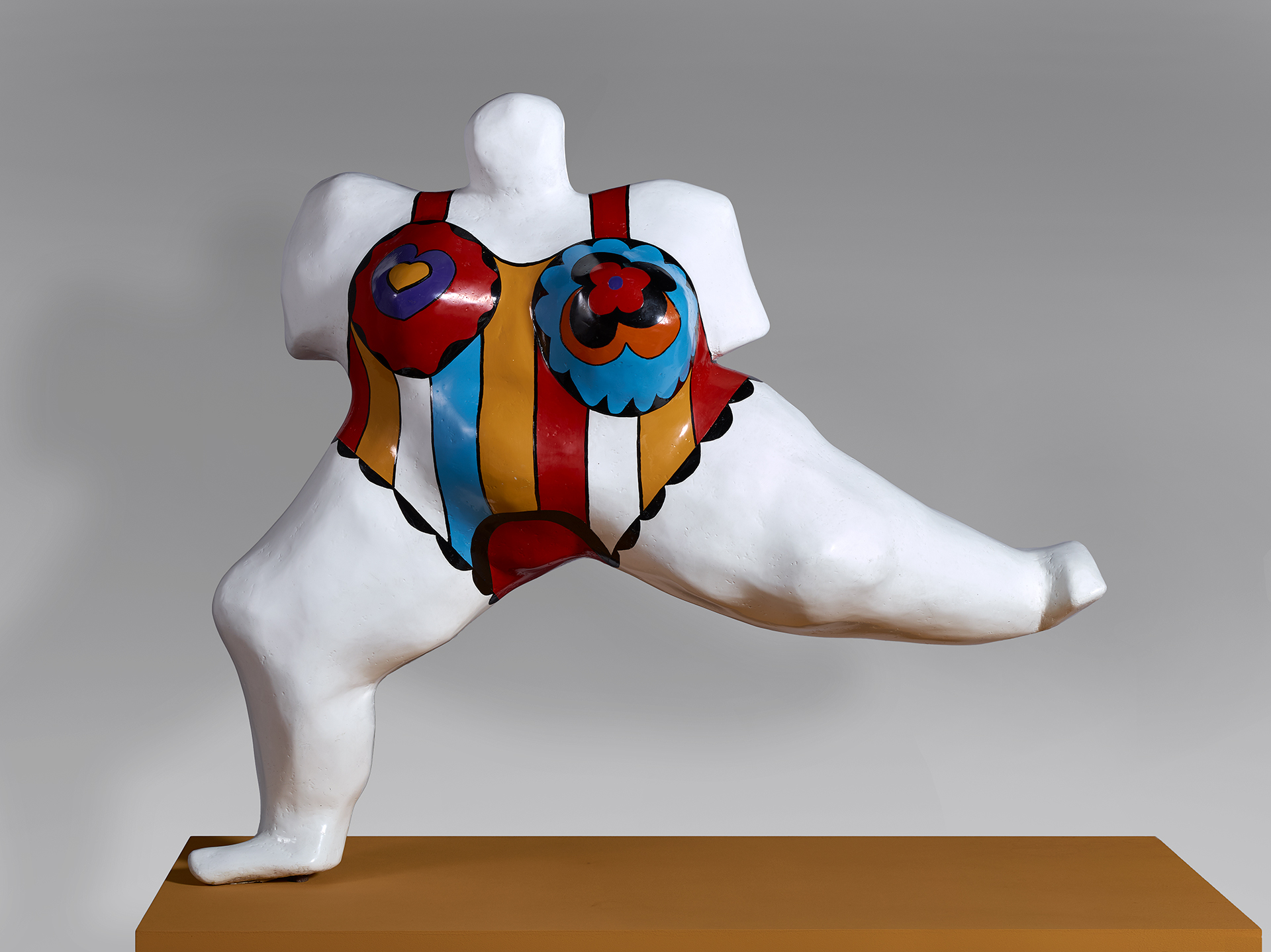
Niki de Saint Phalle (Neuilly-sur-Seine, Francia, 1930 – La Jolla, California, Estados Unidos, 2002)
Dancer
1966
WORK INFORMATION
Polychromed polyester resin, 120 × 143 × 55 cm
When French artist Niki de Saint Phalle built a gigantic figure at the Moderna Museet in Stockholm in 1966—working on a massive scale, like many of her contemporaries—and entitled it Hon [She], it was clear that she would go down in history as a forerunner of the "feminist art" that flourished in New York and other cities in the following decade. Saint Phalle's enormous female figure was lying down, with her knees bent and feet firmly planted on the ground, giving viewers access to the sculpture-place by way of the vagina, where they ran into an unexpected twist: the female body had ceased to be taboo, off-limits, and became something humorous, stripped of its mythical aura. No longer would the obvious parts of the female anatomy be concealed, as they had been for centuries in art history: in Saint Phalle's work, mystery was made fun and visitors were surprised by a face-to-face encounter with the negated truth. The same thing would occur in the following decade with feminist artists and their efforts to recover all that had been erased and suppressed from the lives (and sexuality) of women.
This was undoubtedly her response to the representations of Pop artists like Tom Wesselmann and the Englishman Allen Jones, who had idealised or trivialised the female image, portraying women as sexy, submissive pin-ups in their paintings and sculptures. In fact, the decision to display a radically unconventional woman and, in particular, to play up its humorous aspect, is undoubtedly the most important contribution made by this artist. Saint Phalle was connected to the French New Realists who, like Pop artists, favoured themes taken from everyday life, although their approach had a Neo-Dada side, working with waste materials and impossible combinations of objects.
Saint Phalle began her career constructing these types of collages out of waste materials, although her focus soon shifted to the famous Nanas, large, almost monstrous women with a playful, toy-like appearance which she later painted in bright colours, imitating certain specimens of traditional craftsmanship to a degree. These sculptures posit the notion of "high culture" as something that needs to be revised and rewritten—her use of the material and her execution speak volumes—and the image of women as outmoded and ill-attuned to the demands of the times. Consequently, the pin-ups become grotesque, denouncing manipulations in the constructions of the feminine, and their anatomies flout convention, occasionally acquiring a black skin and pointing to a subversive attitude which, as stated above, connects with the creative proposals of the following decade. [Estrella de Diego]

